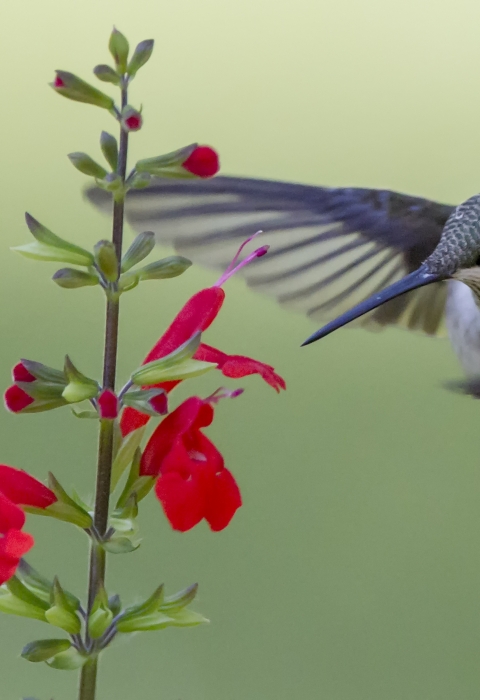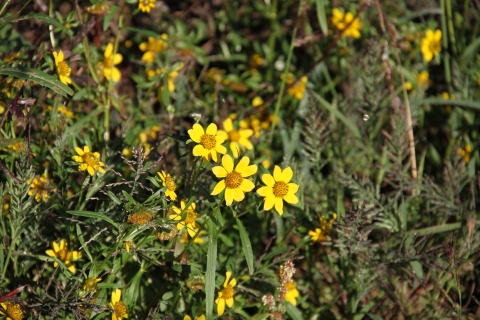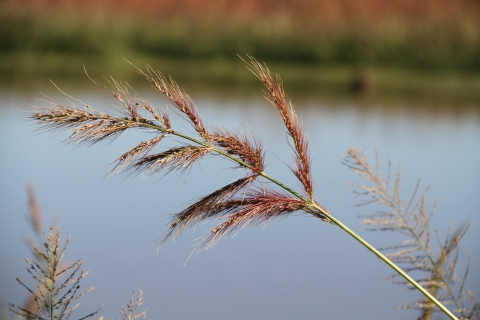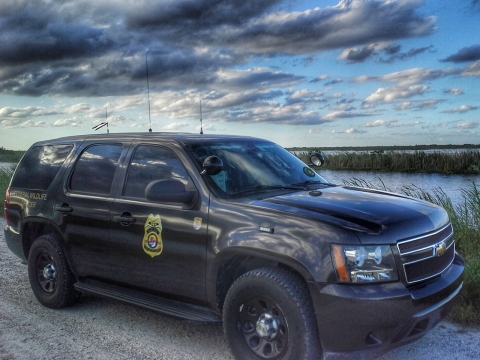What We Do
During the spring and summer, water is removed from the shallows of several impoundments to allow for the germination of natural wetland plants. After the plants have matured and produced an abundance of seeds, the impoundments are flooded. Waterfowl and other marsh birds feast upon these natural seed sources. Drawdowns in the moist soil areas also produce mud-flats that nourish shorebirds during their spring and fall migrations.
Select refuge lands are offered to local farmers under the cooperative farming program. In exchange for a share of the crop, local farmers cultivate and plant the refuge’s fertile lands to produce corn, milo, and winter wheat for waterfowl. The refuge’s share is left unharvested in the field. Flooded agricultural fields of unharvested crops draw ducks and geese onto the refuge where they are able to feed and rest. Healthy, well-nourished ducks and geese depart the refuge in early spring.
The refuge’s forest management plan emphasizes improved habitat for forest nesting birds. During the late 1800’s and early 1900’s vast expanses of mature trees were clear cut to fuel the industrial revolution. The impacts of massive forest clearing, and increased control of wildfires greatly influenced the present condition of the forest. The end result is a forest with trees of similar age, with poorly developed crowns, and in a stagnant stage of growth.
The forest’s condition has impacted many bird species by reducing suitable nesting and foraging habitat. In an effort to restore more natural forest conditions, a forest management plan has been developed and measures taken to carefully alter the forest structure structure
Something temporarily or permanently constructed, built, or placed; and constructed of natural or manufactured parts including, but not limited to, a building, shed, cabin, porch, bridge, walkway, stair steps, sign, landing, platform, dock, rack, fence, telecommunication device, antennae, fish cleaning table, satellite dish/mount, or well head.
Learn more about structure . Using very selective harvest techniques, the forest has been thinned to reduce overcrowded trees, and to allow the remaining trees to grow larger. Openings in the canopy allow vegetation on the forest floor to become denser. This type of forest management improves habitat for birds and many other species of wildlife.
Tennessee National Wildlife Refuge supports wood duck reproduction success with an active wood duck nest box program. Large numbers of “woodies” can be found in refuge wetlands, nesting in artificial nest boxes, and in natural tree cavities.
The refuge uses trapping as a wildlife management tool for the conservation and management of wildlife populations. Trapping may be used to protect endangered species, migratory birds, prevent and address property damage, control invasive species invasive species
An invasive species is any plant or animal that has spread or been introduced into a new area where they are, or could, cause harm to the environment, economy, or human, animal, or plant health. Their unwelcome presence can destroy ecosystems and cost millions of dollars.
Learn more about invasive species , and/or manage abundant species. All trapping activities are carefully managed to ensure that safe, effective practices are used and wildlife populations are sustainable.
Management and Conservation
Law Enforcement
Law Enforcement is critical to every aspect of wildlife conservation. The mission of the Law Enforcement program is to support the administration of the National Wildlife Refuge System through management and protection of natural, historical, and cultural resources, property, and people on lands and waters of our National Wildlife Refuges.




